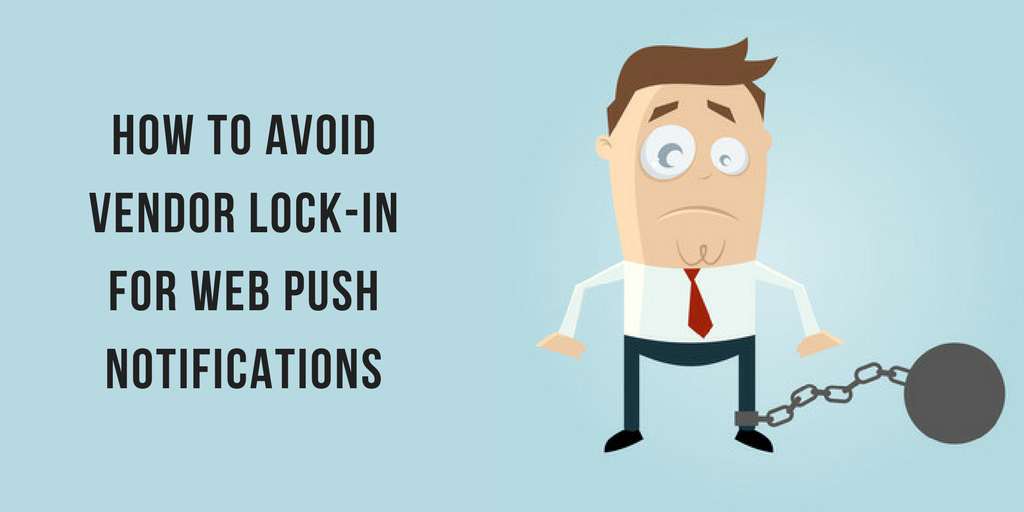
Browser push notification is an interactive way to engage customers no matter where they are and what they are working on. It is a great communication platform, adopted by most popular brands and marketers to grab the user attention by delivering a message when they are not expecting it.
It is a great way to astonish them with rich content they are interested in. But, before using web push notifications let us learn how to implement it without vendor lock-in.
Wondering what do we mean by vendor lock-in?
Vendor lock-in means making customer dependent on a vendor for its products or services. In this case, customers are unable to switch to a new vendor without bearing hefty switching costs and total inconvenience. However, there are some standards set to curb the threat of app lock-in, but a website and web app development can still be used to lock-in customers.
Mostly, customers realize about this situation very late, only when they are trapped and face rising support and maintenance charges, expensive procedures and more. This doesn’t mean that vendor lock-in is an intentional approach adopted by the organizations to restrain their client’s future options.
There are numerous reasons why this might happen. Lack of long-term plans, lack of resources that can deliver the work as per the expectations are some of the reason for vendor lock-in. If the website owners are unable to change their vendors they are facing vendor lock-in situation.
We at PushAssist, a comprehensive web push notification service provider, believe in maintaining a healthy, trustworthy and totally transparent relationship with our customers. That is the reason we want to enlighten them about vendor lock-in. If you do not wish to face vendor lock-in conditions then PushAssist is safe to bet for your website as a browser push notification provider.
How to avoid Vendor Lock-in?
Here are the two steps to prevent vendor lock-in:
First Step:
Create Google Cloud Messaging (GCM) Key and Id. Users can also upgrade GCM to the latest version, Firebase Cloud Messaging (FCM), for more reliable delivery of web push notifications. FCM has scalable GCM infrastructure along with power packed features. FCM is very easy to use as compared to GCM.
However, creating GCM or FCM project and the key is just an initial step to avoid vendor lock-in.
Second Step:
To deliver web push notifications and gain more subscribers requires HTTPs web domain. If you don’t have an HTTPS domain, we can provide you with HTTPS sub-domain to seamlessly deliver browser push notifications.
This is the next step to prevent yourself from getting trapped in vendor lock-in. We know that transferring complete site from HTTP site to HTTPs domain is not that easy. Thus, an alternative for this condition is to integrate a subdomain on HTTPs.
A bit from technical perspective
Talking from Chrome point of view, to deliver web push notifications on chrome browser, it requires service worker threads to run in a browser of the subscriber. This is activated when a notification is sent to the browser. Then the notification is fetched from a Push Server, often hosted by the platform to go live with Push Notification. This is hosted on the HTTPS domain for subscription and notification.
To migrate, you will have to replace the service worker thread, with a new one and point to the new Push Server. To do this you need to have full control over the HTTPS sub-domain.
Conclusion:
PushAssist aims to offer rich customer experience and make engagement and conversion process easier. Customers can now focus on their core business tasks without worrying about the vendor lock-in situation. We offer complete flexibility to our customers and if they wish they can easily switch to other vendors without any inconvenience.
For more information, visit: pushassist.com




.png)
.png)
.png)
.png)
